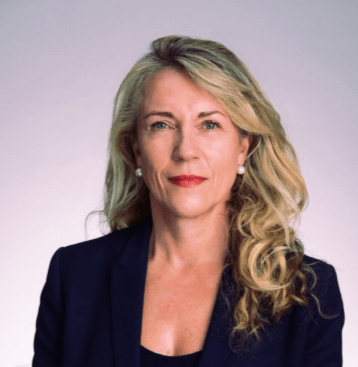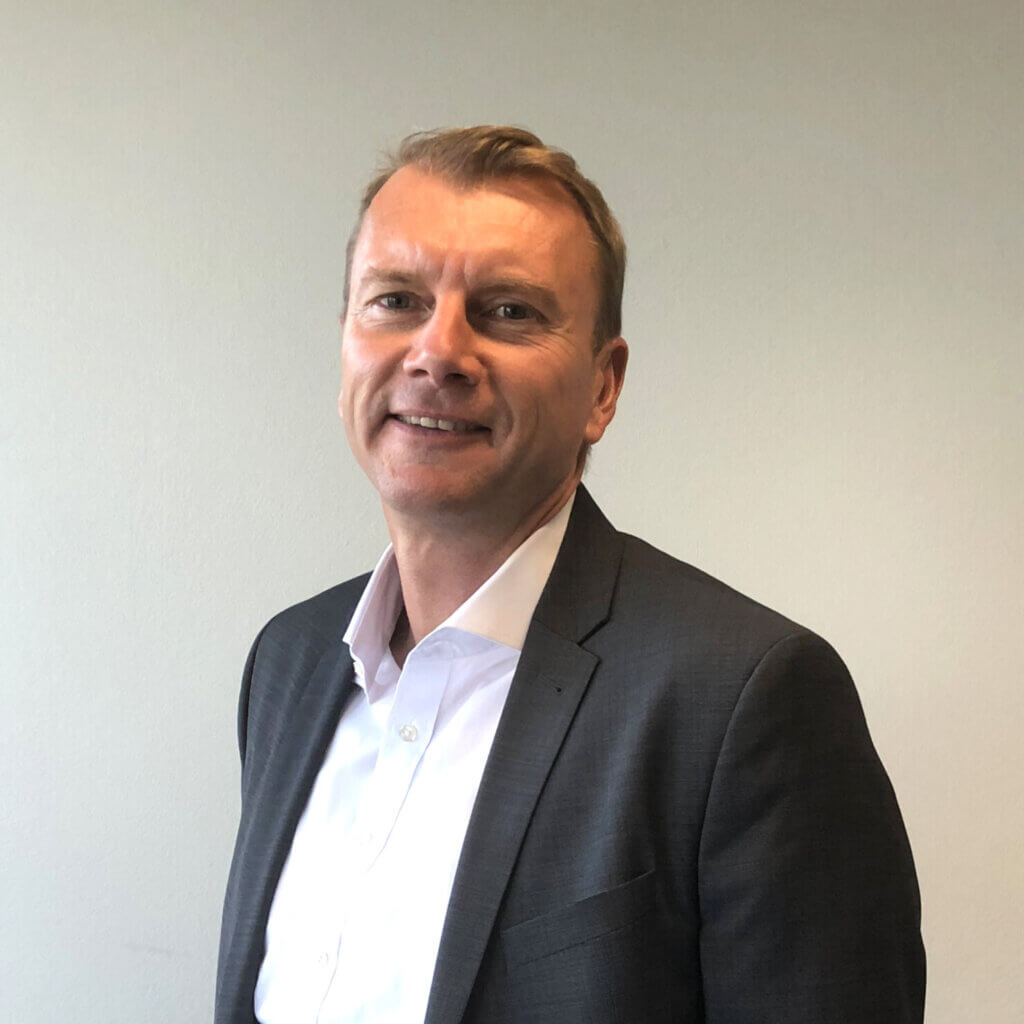
News
Fund accounting & reporting services for venture capital firms
Venture capital accounting is a niche field of accounting that focuses on managing, tracking, and reporting the financial operations of venture capital (VC) funds.
Unlike traditional business accounting, which is primarily concerned with the revenue, expense, and profits of a company, venture capital accounting involves more complex financial structures and tasks, such as tracking capital contributions, calculating investment valuations, and managing the distribution of returns.
In this guide, we will explore the essential components of venture capital accounting and explain some of the benefits of outsourcing this critical function to specialized fund accounting services providers like Alter Domus.

The unique fund accounting needs of venture capital firms
Venture capital (VC) firms operate in a dynamic and highly specialized environment within the private markets space. As a result, their fund accounting needs are markedly different from those of investment managers with public market strategies.
Below are some accounting functions and needs unique to venture capital firms:
Capital calls and distributions management:
Managing and documenting capital calls to limited partners (LPs) and distributions from the fund, and ensuring proper allocation based on ownership and allocation ratios.
Portfolio company valuation:
Performing periodic valuation of portfolio companies according to industry standards.
Carried interest and waterfall calculations:
Tracking carried interest (carry) and modelling complex waterfall structures to determine profit allocations among stakeholders.
Net asset value (NAV) calculation:
Determining the fund’s NAV, which represents the total value of the fund’s assets minus its liabilities.
Fee management:
alculating and tracking management fees, performance fees, and reimbursements at both fund and investor levels.
Investor reporting:
Providing timely, transparent, and customized reports to limited partners.
Audit and compliance support:
Maintaining detailed records to support annual audits tax filings, and compliance with both local regulations and foreign ones, such as the Alternative Investment Fund Managers Directive (AIFMD) in Europe.
Why timely and transparent financial reporting matters for VC firms
Because venture funds typically operate with long timelines and limited liquidity, LPs depend on clear and regular reporting to understand how their capital is being deployed and managed. This includes updates on valuations, capital movements, and overall fund performance.
As such, the ability to deliver accurate and timely information can be a major strategic advantage for VC firms, offering the following benefits:
Increased trust and credibility with LPs:
Timely and transparent reporting fosters trust by showing that the firm is actively monitoring the financial health of its portfolio and making informed decisions. When investors can see accurate and up-to-date financial data, they are more likely to stay engaged and confident in the firm’s ability to manage their money.
Better reputation in the market:
Firms that consistently provide accurate, transparent financial reporting are often viewed more favorably in the market. A track record of transparent reporting serves as a signal of professionalism and operational maturity. This reputation can help attract new investors, high-quality investments, talented portfolio companies, and top-tier talent. All this can contribute to long-term success.
Regulatory compliance and risk mitigation:
VC firms are subject to regulatory requirements that demand accurate financial disclosures. Transparent reporting ensures compliance with these regulations, avoiding legal complications and potential penalties from bodies like the Securities and Exchange Commission (SEC).
Benefits of outsourcing fund accounting and reporting for VC firms
According to a Dynamo Software survey, one of the biggest challenges facing venture capital and private equity funds today is financial reporting, with 64% reporting delays in preparing financial reports. This is not exactly surprising as venture capital fund accounting can be quite complex and demanding.
Indeed, this is one of the primary reasons many VC firms today are choosing to outsource this crucial function to specialized fund accounting services providers like Alter Domus.
Outsourcing venture capital fund accounting and reporting offers several advantages, including the following:
Access to expertise and best practices:
Fund accounting is a specialized discipline that requires deep knowledge of financial regulations, valuation methodologies, and industry-specific reporting standards. Outsourcing gives VC firms access to professionals who are highly experienced in private fund structures and who are up-to-date with the latest regulatory changes and best practices. This ensures a higher level of accuracy and professionalism in all financial reporting.
Improved compliance and risk management:
Regulatory scrutiny of VC firms has increased, making it more important than ever to ensure accurate, timely, and compliant financial reporting. Fund accounting service providers use standardized processes and dedicated controls that reduce the likelihood of errors and help meet fiduciary and regulatory obligations. This helps VC firms avoid costly mistakes and reputational damage.
Cost savings and efficiency:
Outsourcing venture capital fund accounting helps firms reduce the overhead costs associated with maintaining an in-house accounting team. Hiring, training, and retaining skilled professionals can be expensive, especially when the workload fluctuates. Third-party service providers offer scalable solutions, allowing firms to pay for exactly what they need when they need it.
Faster, more consistent reporting:
Experienced third-party providers typically leverage purpose-built technologies and automation tools to deliver consistent, timely reporting. As previously mentioned, better reporting improves investor trust and confidence and can increase a VC firm’s overall reputation and perception in the market.
Freedom to focus on core investment activities:
Outsourcing fund accounting and reporting frees up internal resources to focus on high-value activities like building relationships with investors, sourcing new deals, and optimizing the performance of their portfolio companies.
How Alter Domus supports fund accounting and reporting for venture capital firms
Alter Domus is a global fund administrator with deep expertise in alternative assets such as venture capital funds. The company helps VC firms better manage their accounting and reporting needs with a range of practical and reliable services that include:
Capital call and distribution processing:
Managing the process of capital calls and distributions of proceeds.
NAV calculation:
Accurate and timely calculation of Net Asset Value (NAV).
Management fee and carried interest calculations:
Accurate calculation and processing of management fees and carried interest in line with fund agreements.
Financial statement preparation:
Preparing financial statements in accordance with relevant accounting standards (e.g., IFRS, US GAAP).
Tax compliance support:
Assisting in preparing tax documentation and ensuring compliance with relevant regulations.
Investor Reporting:
Generating customized reports for investors that provide clarity on fund performance, portfolio holdings, and financial activities.
Wrapping up: Fund accounting & reporting for venture capital firms
Venture capital accounting is vastly different from traditional accounting. It includes unique tasks such as tracking capital calls, conducting fair value assessments, calculating carried interest, and managing complex portfolio valuations. These tasks require specialized knowledge and systems to ensure accuracy, compliance, and timely reporting.
As such, many VC firms are turning to expert fund administrators to handle these specialized accounting tasks. Alter Domus is one such provider, offering accounting and reporting services built around the specific needs of venture capital funds. Learn more about Alter Domus’ venture capital solutions and fund administration services, or get in touch to discuss how we can help with your fund’s accounting and reporting requirements.
Analysis
Venture capital compliance requirements
Venture capital funds are pooled investment vehicles that provide financing to startups and emerging companies with high growth potential. In exchange, they take an ownership stake and aim to generate significant returns by exiting these investments later on through events like initial public offerings (IPOs), mergers, or acquisitions.
Like all participants in the financial markets, venture capital funds are subject to a range of regulations designed to ensure transparency, protect investors, and maintain market integrity.
For VC managers, understanding and adhering to these regulations is crucial not only to avoid legal repercussions and penalties, but also to build investor trust, manage risks effectively, and secure the long-term success of both the fund and its portfolio companies.
This article explores the key compliance requirements that apply to venture capital firms, the challenges of managing compliance internally, and how fund administrators like Alter Domus can support VC firms in meeting their obligations.

Key compliance obligations for VC firms
Let’s look at some of the key compliance requirements for starting and managing a venture capital firm or fund.
SEC registration and reporting
Most venture capital funds in the US are typically “private funds,” which means they don’t need to register with the Securities and Exchange Commission (SEC) as ‘investment companies”..
What’s more, many VC firms are classified as Exempt Reporting Advisers (ERAs) under the Dodd-Frank Act, and as such, they are not required to register with the SEC as investment advisers.
However, VC firms are still subject to certain obligations. This includes completing specific sections of Form ADV Part 1A, such as information about their business, ownership, and any sanctions they or their personnel have faced.
In addition, VC firms that qualify as ERAs are required to regularly update their Form ADV to ensure the SEC has accurate and timely information. This includes 2 key obligations.
- ERAs must file an update to Form ADV at least once annually, within 90 days of the end of their fiscal year.
- In addition to the annual filing, firms must promptly amend Form ADV whenever there are material changes to the information previously disclosed, such as changes or updates in ownership, business structure, or disciplinary history.
Fundraising and marketing
Most VC firms raise capital from investors through “exempt offerings,” which essentially allows them to sell securities without registering with the SEC.The most commonly used exemption is Regulation D, particularly Rule 506(b) and Rule 506(c).
Rule 506(b) allows VC firms to raise an unlimited amount of money from accredited investors and up to 35 non-accredited investors. However, this rule forbids general solicitation, meaning that firms cannot publicly advertise their offerings or use broad marketing tactics. All fundraising efforts must be done privately, typically through existing relationships or direct outreach.
Rule 506(c) offers a different approach by permitting general solicitation and public advertising, opening up the possibility of reaching a wider pool of potential investors. However, this flexibility comes with a significant condition: all purchasers of the fund’s interests must be accredited investors, and the venture capital fund must undertake reasonable measures to confirm each investor’s accredited status.
Regardless of whether a venture capital fund uses Rule 506(b) or 506(c), a critical compliance requirement under Regulation D is the timely filing of Form D with the SEC. This brief notice, which provides basic details about the offering, including the amount being raised and the type of investors targeted, must be submitted within 15 days after the first sale of securities.
In addition to the aforementioned SEC regulations, venture capital funds must also be mindful of state-level securities laws, often referred to as “blue sky laws,” in each state where they solicit investors. These state regulations may impose additional requirements that firms must meet alongside the federal rules of Regulation D.
It’s crucial to consult legal counsel to ensure compliance with state requirements.
Anti-Money Laundering (AML) and Know Your Customer (KYC) Requirements
Previously, many venture capital firms, particularly those that qualified as ERAs, were not required to follow comprehensive Anti-Money Laundering (AML) regulations in the same way as banks or broker-dealers under the Bank Secrecy Act (BSA).
While the SEC could take enforcement actions related to misleading statements about voluntary AML procedures, there was no direct mandate under the BSA for these VC firms to establish full-fledged AML programs.
However, a significant regulatory shift is on the horizon with a final rule issued by the Financial Crimes Enforcement Network (FinCEN) on August 28, 2024.
This new rule amends the BSA regulations to include certain SEC-registered investment advisers (RIAs) and ERAs within the definition of “financial institution” under the BSA. This means that a significant portion of venture capital fund managers will now be directly subject to AML obligations.
Specifically, from January 1, 2026, VC firms must establish formal AML compliance programs that include procedures for identifying and reporting suspicious activities, conducting risk assessments, and maintaining thorough records. Additionally, firms must implement Know Your Customer (KYC) protocols to verify the identity of their investors and assess the source of their funds.
Environmental, social, and governance (ESG) considerations
Although Environmental, Social, and Governance (ESG) reporting isn’t yet a formal compliance requirement for many venture capital firms, it has rapidly become a significant area of focus for both regulators and investors.
In regions like the EU, regulations such as the Sustainable Finance Disclosure Regulation (SFDR) are already pushing firms to disclose how they integrate ESG factors. Though these regulations are currently more applicable to larger firms, they signal a shift that may expand to all VC firms over time.
In the U.S., the SEC has adopted rules for public companies to disclose climate-related risks. Similar frameworks could eventually extend to private funds, including venture capital firms.
What’s more, LPs are increasingly demanding greater ESG data reporting from firms, with some even willing to pay more for it. For example, according to a report by PwC Luxembourg, two-thirds of surveyed LPs indicated a willingness to pay higher management fees if it leads to significant improvements in ESG data reporting by their GPs.
Additionally, nearly 45% of respondents said they would consider a fee increase of 5% to 9% if it resulted in more comprehensive and higher-quality ESG reporting practices.
Proactively adopting ESG policies and reporting frameworks can prepare VCs for future regulatory changes and at the same time help gain a competitive edge in the market by demonstrating to investors that they are forward-thinking, transparent, and responsible in their approach to managing investments.
Strategic importance of compliance
Builds trust and credibility:
A strong compliance record signals to investors and portfolio companies that the VC firm operates ethically and with integrity. This fosters trust and enhances the firm’s reputation, which is crucial for attracting and retaining both investors and promising startups.
Prevents legal and financial penalties:
Non-compliance can lead to significant fines, legal battles, and even the loss of licenses to operate. A sturdy compliance program minimizes these risks.
Protects against financial crime:
Implementing strong KYC and AML procedures, as mandated by regulations, safeguards the firm and its investors from financial crimes and reputational damage.
Challenges of managing compliance internally
High resource demands:
Effectively managing compliance internally demands significant time and personnel. For smaller venture capital firms, this can stretch resources thin and lead to oversight gaps where certain regulatory requirements are missed or misunderstood.
Constantly changing regulations:
The regulatory environment for venture capital is complex and frequently shifting, with new rules, reporting standards, and jurisdictional requirements. Keeping pace with these changes internally is difficult, especially for firms operating across multiple regions. This increases the likelihood of inadvertent noncompliance.
Insufficient internal expertise:
Compliance requires deep knowledge of specialized areas, such as financial regulations, anti-money laundering policies, and evolving trends like ESG disclosures. Many firms, particularly smaller ones, lack professionals with expertise in these areas. This lack of sufficient in-house expertise could lead to misinterpretations of regulatory requirements and thus non-compliance.
Rising operational costs:
Maintaining compliance internally can be expensive. Firms may need to invest in additional staff, ongoing training, continuous monitoring, and internal audits. For smaller firms, these added costs can divert resources away from other important business activities, such as deal sourcing and portfolio management.
How Alter Domus supports venture capital compliance
Alter Domus provides specialized compliance services that help venture capital firms meet regulatory requirements effortlessly. Key areas of support include:
Regulatory filings:
Assistance with the preparation and submission of crucial filings such as Form ADV, Form D, and other jurisdictional reporting obligations.
Ongoing monitoring and support:
Continuous monitoring of regulatory changes and updates relevant to VC firms, proactive communication of these changes, and ongoing support in adapting compliance programs accordingly.
AML and KYC support:
Assistance with creating, implementing, and maintaining KYC and AML programs.
ESG reporting support:
Assistance with ESG data collection, aligning with relevant ESG frameworks, and preparing ESG disclosures to meet the expectations of limited partners and comply with any relevant regulations.
Audit support:
Assistance with audit preparation, including organizing required documents, coordinating with auditors, and addressing audit-related questions or issues.
Final thoughts: Venture capital compliance requirements
Compliance management is a critical function in venture capital firms. Besides helping firms meet legal requirements, it builds investor trusts, reduces risk exposure, and contributes to long-term operational stability.
However, for firms with lean teams, staying on top of compliance can be time-consuming and complex. This is where specialized support, like that provided by a fund administrator like Alter Domus, can make a big difference.
Alter Domus takes care of your compliance requirements and operations, including regulatory filings, AML/KYC implementation, and ESG reporting, so you and your team can focus on your core business of finding and nurturing high-potential startups without having to worry about meeting your regulatory obligations.
Explore Alter Domus administration and governance solutions or reach out to our team today to learn more about how we can support your firm’s compliance strategy today.
Conference
Drawdown Operational Leaders Summit
Join Jane Karczewski, Catherine Kavanagh, and Tom Miller at the Drawdown Operational Leaders Summit at Sopwell House in Hertfordshire, from June 19-20. This summit unites senior professionals in finance and operations to discuss the biggest challenges impacting the private markets and best practices for succeeding in an increasingly complex world.
Both Tom and Catherine are speaking – Tom on the impact of consolidation on the industry and Catherine will reflect on global fund performance trends and the role of alternative metrics in private equity.
Key contacts

Jane Karczewski
United Kingdom
Head of Key Client Partnerships – Europe

Tom Miller
United Kingdom
Director, Sales Real Estate

Catherine Kavanagh
United Kingdom
Director, Sales & Relationship Management
More events
No related content found.
Conference
PERE Tokyo
Join Jamie Loke at the PERE Tokyo Forum in Tokyo, aimed at getting a better understanding of Japanese investor needs. Alter Domus is excited to share our expertise in integrated global real estate solutions with fellow Asian investment leaders.
Did you know we currently serve 80% of the world’s largest real estate and infrastructure firms? Don’t miss the chance to meet with Jamie and learn more.

Jamie Loke
Singapore
Head of Sales and Relationship Management, SEA
More events
No related content found.
Conference
Invest Europe CFO Forum
Join Catherine Kavangh, Dirk Sanden and Patrick McCullagh at the Invest Europe CFO Forum in Estoril, Portugal from May 22-23. This forum, for CFOs, COOs and senior finance and fund executives in private equity and venture capital offers a peer-to-peer sharing environment to reflect on current initiatives, challenges, and strategic objectives.
Don’t miss Catherine’s session on Outsourcing vs Co-sourcing on May 22 at 12 PM—drawing from hands-on experience delivering these rollouts in practice. She will also be leading a roundtable follow-up session, right after lunch.
Key contacts

Dirk Sanden
Luxembourg
Director, Sales & Relationship Management

Patrick McCullagh
United Kingdom
Managing Director, Sales, Europe & United States

Catherine Kavanagh
United Kingdom
Director, Sales & Relationship Management
More events
No related content found.
Conference
Irish Funds Annual Global Funds Conference

James McEvoy
Ireland
Country Executive Ireland

Catherine Kavanagh
United Kingdom
Director, Sales & Relationship Management
More events



















Conference
AIM Summit
Join Jane Karczewski, Head of Key Client Partnerships EMEA at the AIM Summit in London, May 19-20 in London. This event brings together senior decision-makers in an intimate setting across the alternatives space to discuss innovations, market trends and the latest news. If you’re there, reach out to Jane!
Key contacts

Jane Karczewski
United Kingdom
Head of Key Client Partnerships – Europe
More events
No related content found.
Conference
13th Private Equity New York Forum
| We’re excited to be attending Markets Group 13th Annual Private Equity Forum in New York. Tim Toska will be speaking on the keynote panel: Navigating the U.S. Private Equity Market from 8:55-9:25 AM. Conor O’Callaghan, Darrell Pisarra, and Devin Vasquez will also be in attendance—connect with them during the event! |

Tim Toska
United States
Global Sector Head, Private Equity

Conor O’Callaghan
Ireland
EU Fund Regulated solutions
More events



















Conference
0100 Emerging Europe 2025
Alter Domus is excited to attend 0100 Emerging Europe 2025, hosted by Zero One Hundred Conferences. Our own Domenic Azzopardi will be on the ground in Budapest from May 14-16, connecting with private equity and venture capital leaders from across the CEE region. Domenic is looking forward to discussing how Alter Domus supports fund managers with tailored solutions, operational excellence, and deep local expertise.
More events



















Conference
SuperReturn CFO COO North America
| We are looking forward to Informa Connect‘s SuperReturn CFO COO North America in Chicago this May 13-15. We’re hosting networking drinks on day 1 of the main conference (May 14) – a great opportunity to connect, unwind, and kick off conversations with peers across the industry. Please stop by from 5:10 to see our CEO Doug Hart and the team. That same day, Ned Siegel will be speaking on the Fireside Chat “Optimizing operations for the investor and strategies to stay ahead” at 11:45 AM. Other team members on ground will be David Traverso, Kenny King, CFA, Stephanie Golden, Greg Myers, and Curtis Beyer |

Greg Myers
United States
Global Sector Head, Debt Capital Markets

Ned Siegel
United States
Managing Director, Sales and Relationship Management, Private Equity

David Traverso
North America
Managing Director, Sales at Alter Domus North America

Stephanie Golden
United States
Managing Director, Sales, North America

Kenny King
United States
Head of Key Client Partnerships – North America
More events
























